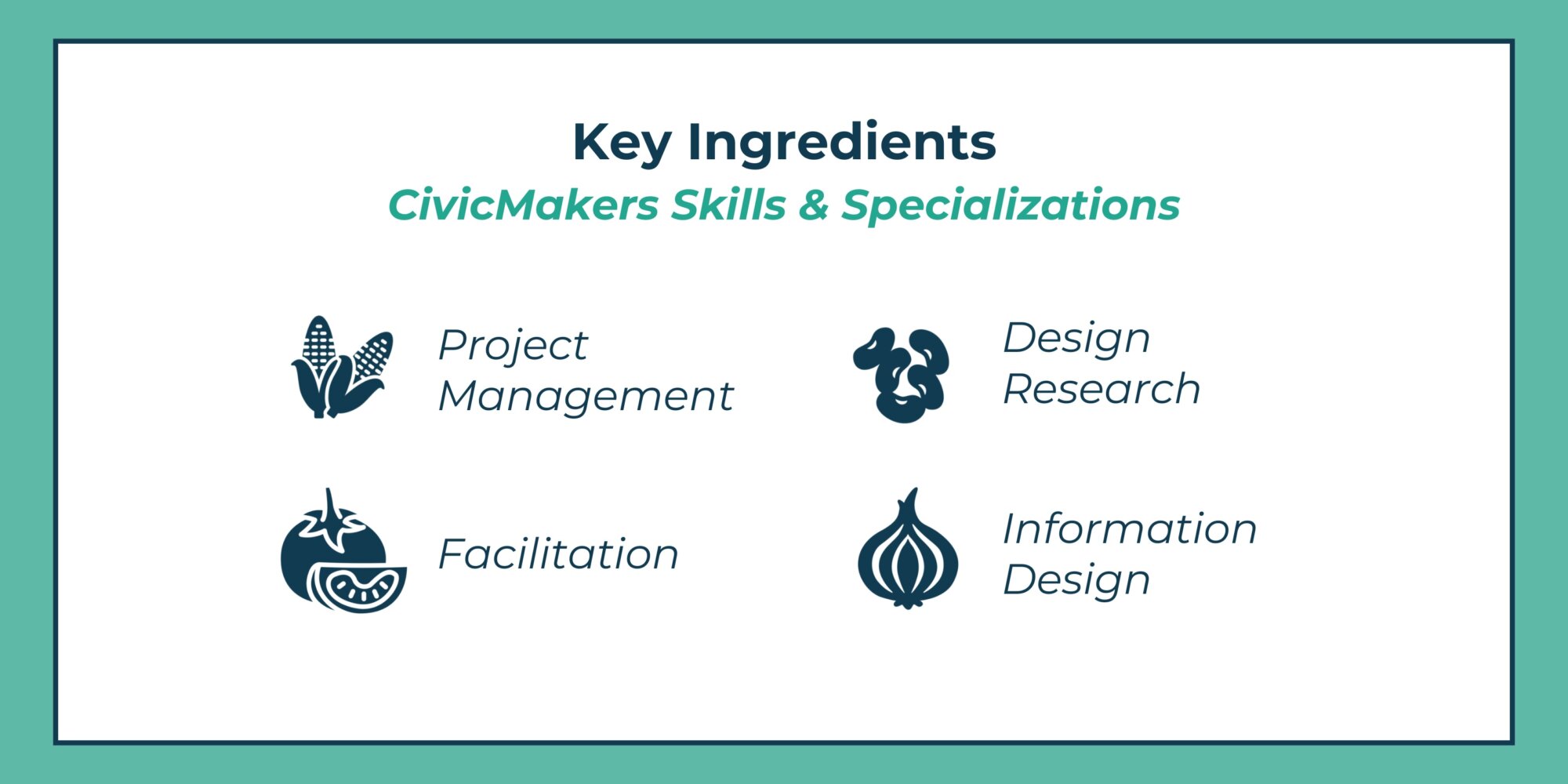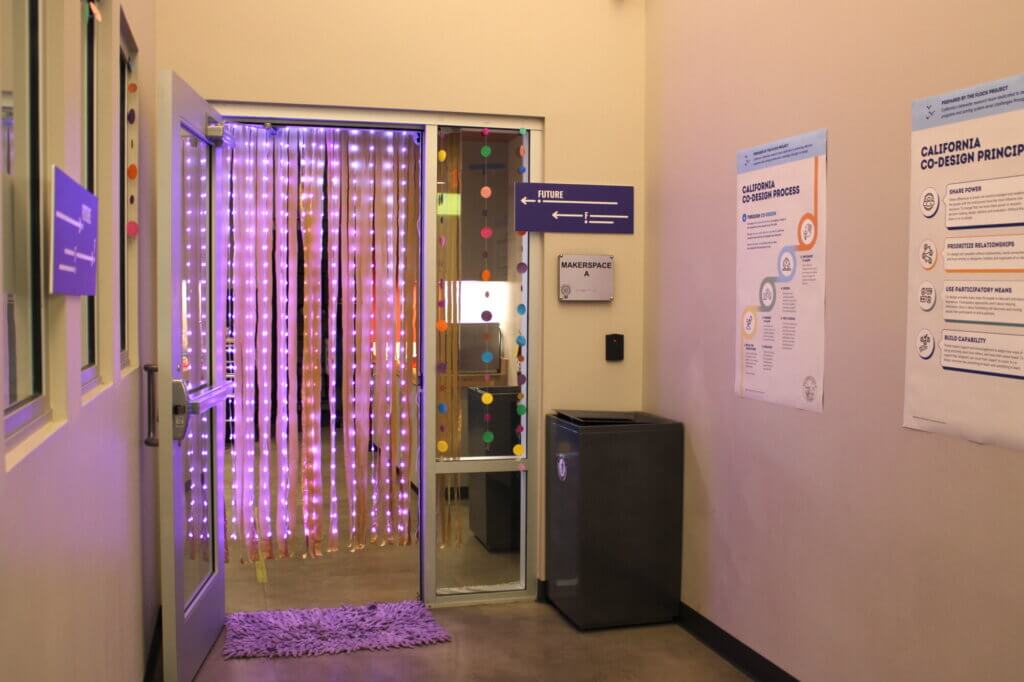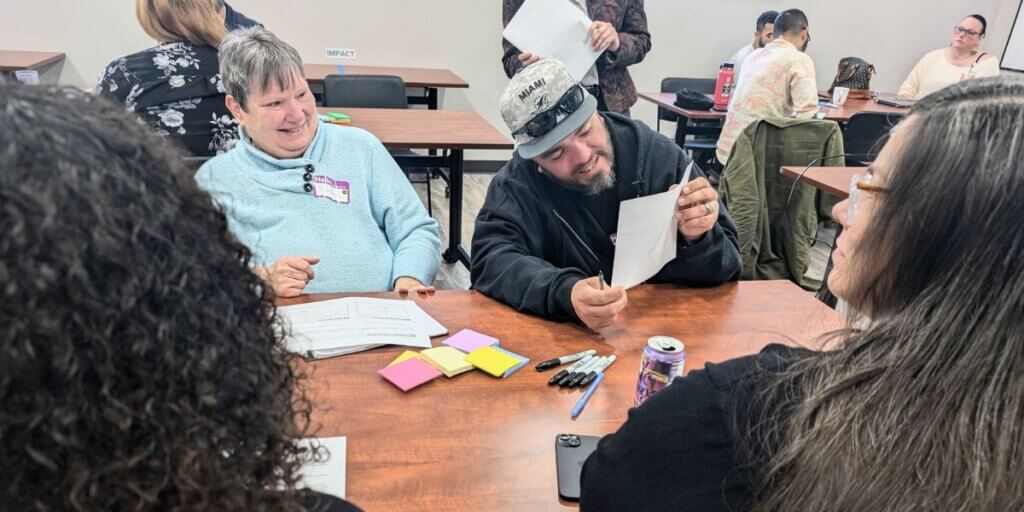The CivicMakers Menu of Services
Key ingredients to leverage our skills for improved public services

The CivicMakers Team is hitting a celebratory milestone in November, 2025 – 10 years of bringing human-centered design to public institutions across the Hopeful State of California (and beyond!)
Over the years, we’ve been refining our approach and areas of service. This year, with a renewed vision wherein we imagine a world where public services are welcoming, just and easy to navigate, our team came together at one of our quarterly “Design Kickbacks” to further define where we apply our talents (and HCD) best.
Design Kickbacks: A laid-back team gathering to discuss and grow our Design Research Practice. Around once a quarter, we meet in-person to explore new methods, refine our approaches, or formalize how we embody our guiding principles. These sessions prioritize: a casual atmosphere, active dialogue, and low commitment (no pre-work required).
Reflecting on our Service Areas
This process started through our annual business development strategy. We brought together the team, virtually, to discuss our service areas and to reflect on our projects over the past couple years. What projects brought us joy? What projects were aligned with our unique strengths, as a team? This process helped us validate these four service areas to refine further.

After vetting these four categories at a high level, we held a Design Kickback to further differentiate each service area in terms of our core skills (key ingredients) and work products.
First, we reviewed our current service area descriptions to determine what works well, what might be missing, and where we have seen the greatest impact for our clients over the years. During this working session, we visualized our services as a restaurant menu, and asked ourselves what we’d want to curate for our partners. We knew our current menu of eight different service areas was not giving us the focus we needed to truly go deep on intentional co-design and trauma-informed approaches.
At the time, our menu read a little more like the Cheesecake Factory; there’s something for everyone within the dozens of pages, but the quality of our work may benefit from a pared down menu. With a decade of experience and increased specializations under our belts (or, chef’s hats?) we’ve narrowed our service areas to the following, with their respective food metaphors:
Service Areas |
On the Menu |
|
Service Design & Evaluation. Uncovering human needs through insight gathering from a suite of methods to ensure programs and services provide meaningful, effective experiences. |
Botanas. This area can be described as appetizers, or small plates, that are modular and shared by all parties present. This service area provides the greatest opportunity to “mix and match” our methods to meet the scale of the task and best serve the people impacted. |
|
Strategic Planning. Setting a shared vision, priorities and implementation plans to help guide the work of cities, departments and organizations. |
Burritos. This area reminds us of burritos – making decisions on what delicious layers to add and packaging it neatly, and practically, in a tortilla. Add too much to your burrito, without clear direction, and you overflow. |
|
Training & Capacity Building. Facilitating opportunities for deep learning and skills-practice within teams, departments and organizations. |
Fajitas. A hot plate of sizzling fajitas! This service requires higher energy and contains ingredients for people to build on their own. Each one is a little different, but the core ingredients remain the same. |
|
Community & Stakeholder Engagement. Involving community members and other individuals who will be impacted by program and policy decisions in the decision-making process. |
Ensalada. Engagement reminds us of salads, blending together toppings from several different groups. Here we add different textures, spices and flavors that can be mixed together without removing the distinct presence of each. |
In this Design Kickback we got to dig deeper and explore the primary role of human-centered design in each service area, and where our greatest impact can be had.
Here’s the worksheet that our Principal Design Researcher developed to guide our thinking:

We’re sharing this part of our process in case it’s helpful to other firms, consultants or our public sector partners in clarifying their own offerings. Where might you adjust your recipes to ensure your services are meeting current needs? What other ingredients might you add to enhance some of your customer’s favorite dishes? How can your menu stand out against the smorgasbord of different offerings in the space of improved public services?



